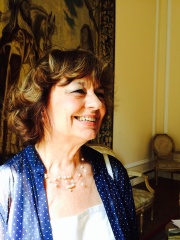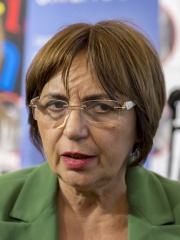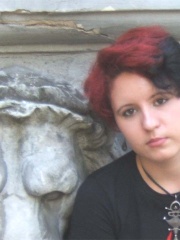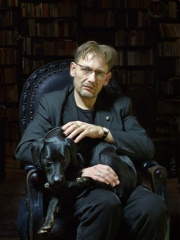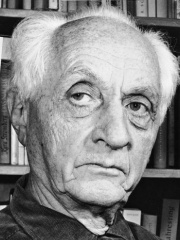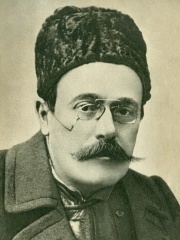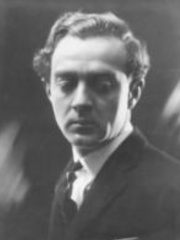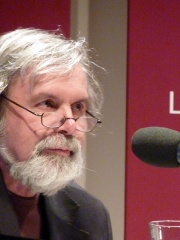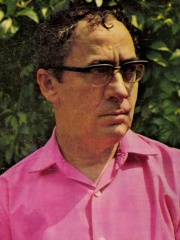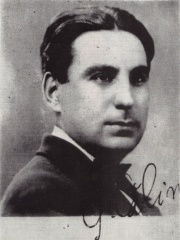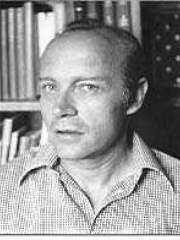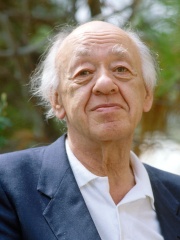
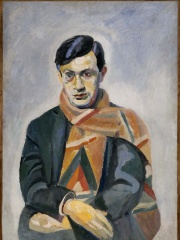
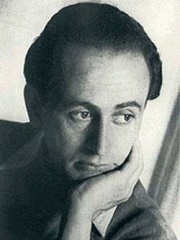



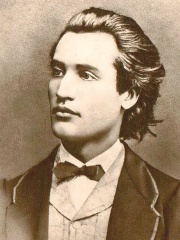
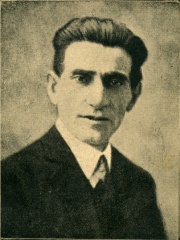
The Most Famous
WRITERS from Romania
Top 10
The following people are considered by Pantheon to be the top 10 most legendary Romanian Writers of all time. This list of famous Romanian Writers is sorted by HPI (Historical Popularity Index), a metric that aggregates information on a biography’s online popularity. Visit the rankings page to view the entire list of Romanian Writers.

1. Eugène Ionesco (1909 - 1994)
With an HPI of 74.53, Eugène Ionesco is the most famous Romanian Writer. His biography has been translated into 75 different languages on wikipedia.
Eugène Ionesco (French: [øʒɛn jɔnɛsko]; born Eugen Ionescu, Romanian: [e.uˈdʒen joˈnesku] ; 26 November 1909 – 28 March 1994) was a Romanian-French playwright who wrote mostly in French, and was one of the foremost figures of the French avant-garde theatre in the 20th century. Ionesco instigated a revolution in ideas and techniques of drama, beginning with his "anti play", The Bald Soprano which contributed to the beginnings of what is known as the Theatre of the Absurd, which includes a number of plays that, following the ideas of the philosopher Albert Camus, explore concepts of absurdism and surrealism. He was made a member of the Académie française in 1970, and was awarded the 1970 Austrian State Prize for European Literature, and the 1973 Jerusalem Prize.

2. Tristan Tzara (1896 - 1963)
With an HPI of 72.46, Tristan Tzara is the 2nd most famous Romanian Writer. His biography has been translated into 66 different languages.
Tristan Tzara (French: [tʁistɑ̃ dzaʁa]; Romanian: [trisˈtan ˈt͡sara]; born Samuel or Samy Rosenstock, also known as S. Samyro; 28 April [O.S. 16 April] 1896 – 25 December 1963) was a Romanian avant-garde poet, essayist and performance artist. Also active as a journalist, playwright, literary and art critic, composer and film director, he was known best for being one of the founders and central figures of the anti-establishment Dada movement. Under the influence of Adrian Maniu, the adolescent Tzara became interested in Symbolism and co-founded the magazine Simbolul with Ion Vinea (with whom he also wrote experimental poetry) and painter Marcel Janco. During World War I, after briefly collaborating on Vinea's Chemarea, he joined Janco in Switzerland. There, Tzara's shows at the Cabaret Voltaire and Zunfthaus zur Waag, as well as his poetry and art manifestos, became a main feature of early Dadaism. His work represented Dada's nihilistic side, in contrast with the more moderate approach favored by Hugo Ball. After moving to Paris in 1919, Tzara, by then one of the "presidents of Dada", joined the staff of Littérature magazine, which marked the first step in the movement's evolution toward Surrealism. He was involved in the major polemics which led to Dada's split, defending his principles against André Breton and Francis Picabia, and, in Romania, against the eclectic modernism of Vinea and Janco. This personal vision on art defined his Dadaist plays The Gas Heart (1921) and Handkerchief of Clouds (1924). A forerunner of automatist techniques, Tzara eventually aligned himself with Breton's Surrealism, and under its influence wrote his celebrated utopian poem "The Approximate Man". During the final part of his career, Tzara combined his humanist and anti-fascist perspective with a communist vision, joining the Republicans in the Spanish Civil War and the French Resistance during World War II, and serving a term in the National Assembly. Having spoken in favor of liberalization in the People's Republic of Hungary just before the Revolution of 1956, he distanced himself from the French Communist Party, of which he was by then a member. In 1960, he was among the intellectuals who protested against French actions in the Algerian War. Tristan Tzara was an influential author and performer, whose contribution is credited with having created a connection from Cubism and Futurism to the Beat Generation, Situationism and various currents in rock music. The friend and collaborator of many modernist figures, he was the lover of dancer Maja Kruscek in his early youth and was later married to Swedish artist and poet Greta Knutson.

3. Paul Celan (1920 - 1970)
With an HPI of 69.51, Paul Celan is the 3rd most famous Romanian Writer. His biography has been translated into 49 different languages.
Paul Celan (; German: [ˈtseːlaːn]), born Paul Antschel, (23 November 1920 – c. 20 April 1970) was a Romanian-born French poet, Holocaust survivor, and literary translator. Due to his many radical poetic and linguistic innovations, Celan regarded as one of the most important figures in German-language literature of the post-World War II era and a poet whose verse has an immortal place in the literary pantheon. His poetry is characterized by a complicated and cryptic style that deviates from poetic conventions.

4. Herta Müller (b. 1953)
With an HPI of 69.10, Herta Müller is the 4th most famous Romanian Writer. Her biography has been translated into 107 different languages.
Herta Müller (German: [ˈhɛʁta ˈmʏlɐ] ; born 17 August 1953) is a Romanian-German novelist, poet, essayist and recipient of the 2009 Nobel Prize in Literature. She was born in Nițchidorf (German: Niczkydorf; Hungarian: Niczkyfalva), Timiș County in Romania; her native language is German. Since the early 1990s, she has been internationally established, and her works have been translated into more than twenty languages.Müller is noted for her works depicting the effects of violence, cruelty and terror, usually in the setting of the Socialist Republic of Romania under the repressive Nicolae Ceaușescu regime which she has experienced herself. Many of her works are told from the viewpoint of the German minority in Romania and are also a depiction of the modern history of the Germans in the Banat and Transylvania. Her much acclaimed 2009 novel The Hunger Angel (Atemschaukel) portrays the deportation of Romania's German minority to Soviet Gulags during the Soviet occupation of Romania for use as German forced labour. Müller has received more than twenty awards to date, including the Kleist Prize (1994), the Aristeion Prize (1995), the International Dublin Literary Award (1998) and the Franz Werfel Human Rights Award (2009). On 8 October 2009, the Swedish Academy announced that she had been awarded the Nobel Prize in Literature, describing her as a woman "who, with the concentration of poetry and the frankness of prose, depicts the landscape of the dispossessed".
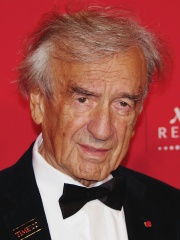
5. Elie Wiesel (1928 - 2016)
With an HPI of 66.51, Elie Wiesel is the 5th most famous Romanian Writer. His biography has been translated into 79 different languages.
Eliezer "Elie" Wiesel ( EL-ee vee-ZEL or EE-ly VEE-səl; Yiddish: אליעזר "אלי" װיזל, romanized: Eliezer "Eli" Vizl; September 30, 1928 – July 2, 2016) was a Romanian-born American writer, professor, political activist, Nobel laureate, and Holocaust survivor. He authored 57 books, written mostly in French and English, including Night, a work based on his experiences as a Jewish prisoner in the Auschwitz and Buchenwald concentration camps.In his political activities Wiesel became a regular speaker on the subject of the Holocaust and remained a strong defender of human rights during his lifetime. He also advocated for many other causes like the state of Israel and against Hamas and victims of oppression including Soviet and Ethiopian Jews, the apartheid in South Africa, the Bosnian genocide, Sudan, the Kurds and the Armenian genocide, Argentina's Desaparecidos or Nicaragua's Miskito people.He was a professor of the humanities at Boston University, which created the Elie Wiesel Center for Jewish Studies in his honor. He was involved with Jewish causes and human rights causes and helped establish the United States Holocaust Memorial Museum in Washington, D.C. Wiesel was awarded various prestigious awards including the Nobel Peace Prize in 1986. He was a founding board member of the New York Human Rights Foundation and remained active in it throughout his life.

6. Jacob L. Moreno (1889 - 1974)
With an HPI of 66.33, Jacob L. Moreno is the 6th most famous Romanian Writer. His biography has been translated into 33 different languages.
Jacob Levy Moreno (born Iacob Levy; May 18, 1889 – May 14, 1974) was a Romanian-American psychiatrist, psychosociologist, and educator, the founder of psychodrama, and the foremost pioneer of group psychotherapy. During his lifetime, he was recognized as one of the leading social scientists.

7. Dimitrie Cantemir (1673 - 1723)
With an HPI of 65.56, Dimitrie Cantemir is the 7th most famous Romanian Writer. His biography has been translated into 43 different languages.
Dimitrie or Demetrius Cantemir (Romanian pronunciation: [diˈmitri.e kanteˈmir] , Russian: Дмитрий Кантемир; 26 October 1673 – 21 August 1723), also known by other spellings, was a Moldavian prince, statesman, and man of letters. He twice served as voivode of Moldavia (March–April 1693 and 1710–1711). During his second term he allied his state with Russia in a war against Moldavia's Ottoman overlords; Russia's defeat forced Cantemir's family into exile and the replacement of the native voivodes by Greek phanariots. Cantemir was also a prolific writer, variously a philosopher, historian, composer, musicologist, linguist, ethnographer, and geographer. His son Antioch, Russia's ambassador to Great Britain and France and a friend of Montesquieu and Voltaire, would become known as "the father of Russian poetry".

8. Mihai Eminescu (1850 - 1889)
With an HPI of 65.33, Mihai Eminescu is the 8th most famous Romanian Writer. His biography has been translated into 67 different languages.
Mihai Eminescu (Romanian pronunciation: [miˈhaj emiˈnesku] ; born Mihail Eminovici; 15 January 1850 – 15 June 1889) was a Romanian Romantic poet from Moldavia, novelist, and journalist, generally regarded as the most famous and influential Romanian poet. Eminescu was an active member of the Junimea literary society and worked as an editor for the newspaper Timpul ("The Time"), the official newspaper of the Conservative Party (1880–1918). His poetry was first published when he was 16 and he went to Vienna, Austria to study when he was 19. The poet's manuscripts, containing 46 volumes and approximately 14,000 pages, were offered by Titu Maiorescu as a gift to the Romanian Academy during the meeting that was held on 25 January 1902. Notable works include Luceafărul (The Vesper/The Evening Star/The Lucifer/The Daystar), Odă în metru antic (Ode in Ancient Meter), and the five Letters (Epistles/Satires). In his poems, he frequently used metaphysical, mythological and historical subjects. His father was Gheorghe Eminovici, an aristocrat from Bukovina, which was then part of the Austrian Empire (while his grandfather came from Banat). He crossed the border into Moldavia, settling in Ipotești, near the town of Botoșani. He married Raluca Iurașcu, an heiress of an old noble family. In a Junimea register, Eminescu wrote down his birthday date as 22 December 1849, while in the documents of Cernăuți Gymnasium, where Eminescu studied, his birth date is 15 January 1850. Nevertheless, Titu Maiorescu, in his work Eminescu and His Poems (1889) quoted N. D. Giurescu's research and adopted his conclusion regarding the date and place of Mihai Eminescu's birth, as being 15 January 1850, in Botoșani. This date resulted from several sources, among which there was a file of notes on christenings from the archives of the Uspenia (Princely) Church of Botoșani; inside this file, the date of birth was "15 January 1850" and the date of christening was the 21st of the same month. The date of his birth was confirmed by the poet's elder sister, Aglae Drogli, who affirmed that the place of birth was the village of Ipotești, Botoșani County.

9. Panait Istrati (1884 - 1935)
With an HPI of 62.08, Panait Istrati is the 9th most famous Romanian Writer. His biography has been translated into 33 different languages.
Panait Istrati (Romanian: [panaˈit isˈtrati]; sometimes rendered as Panaït Istrati; August 10, 1884 – April 16, 1935) was a Romanian working class writer, who wrote in French and Romanian, nicknamed The Maxim Gorky of the Balkans. Istrati appears to be the first Romanian author explicitly depicting a homosexual character in his work.
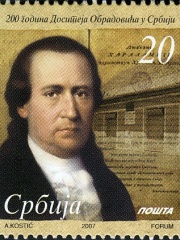
10. Dositej Obradović (1742 - 1811)
With an HPI of 61.02, Dositej Obradović is the 10th most famous Romanian Writer. His biography has been translated into 38 different languages.
Dositej Obradović (Serbian Cyrillic: Доситеј Обрадовић, Serbian pronunciation: [dɔsǐtɛːj ɔbrǎːdɔʋitɕ]; 17 February 1739 – 7 April 1811) was a Serbian writer, biographer, diarist, philosopher, pedagogue, educational reformer, linguist, polyglot and the first minister of education of Serbia. An influential protagonist of the Serbian national and cultural renaissance, he advocated Enlightenment and rationalist ideas, while remaining a Serbian patriot and an adherent of the Serbian Orthodox Church.
People
Pantheon has 62 people classified as Romanian writers born between 1510 and 1981. Of these 62, 9 (14.52%) of them are still alive today. The most famous living Romanian writers include Herta Müller, Mircea Cărtărescu, and Ana Blandiana. The most famous deceased Romanian writers include Eugène Ionesco, Tristan Tzara, and Paul Celan. As of April 2024, 5 new Romanian writers have been added to Pantheon including Richard Wagner, Marin Preda, and George Călinescu.
Living Romanian Writers
Go to all RankingsHerta Müller
1953 - Present
HPI: 69.10
Mircea Cărtărescu
1956 - Present
HPI: 55.14
Ana Blandiana
1942 - Present
HPI: 53.23
Gabriela Adameșteanu
1942 - Present
HPI: 49.63
Ádám Bodor
1936 - Present
HPI: 46.15
Linda Maria Baros
1981 - Present
HPI: 42.51
Attila Bartis
1968 - Present
HPI: 36.45
Delia Grigore
1972 - Present
HPI: 35.70
Dan Stanca
1956 - Present
HPI: 34.04
Deceased Romanian Writers
Go to all RankingsEugène Ionesco
1909 - 1994
HPI: 74.53
Tristan Tzara
1896 - 1963
HPI: 72.46
Paul Celan
1920 - 1970
HPI: 69.51
Elie Wiesel
1928 - 2016
HPI: 66.51
Jacob L. Moreno
1889 - 1974
HPI: 66.33
Dimitrie Cantemir
1673 - 1723
HPI: 65.56
Mihai Eminescu
1850 - 1889
HPI: 65.33
Panait Istrati
1884 - 1935
HPI: 62.08
Dositej Obradović
1742 - 1811
HPI: 61.02
Károly Kerényi
1897 - 1973
HPI: 58.93
Ion Luca Caragiale
1852 - 1912
HPI: 58.40
Lajos Zilahy
1891 - 1974
HPI: 57.07
Newly Added Romanian Writers (2024)
Go to all RankingsRichard Wagner
1952 - 2023
HPI: 48.22
Marin Preda
1922 - 1980
HPI: 47.30
George Călinescu
1899 - 1965
HPI: 46.77
Dan Pagis
1930 - 1986
HPI: 46.44
Aglaja Veteranyi
1962 - 2002
HPI: 43.43
Overlapping Lives
Which Writers were alive at the same time? This visualization shows the lifespans of the 25 most globally memorable Writers since 1700.


